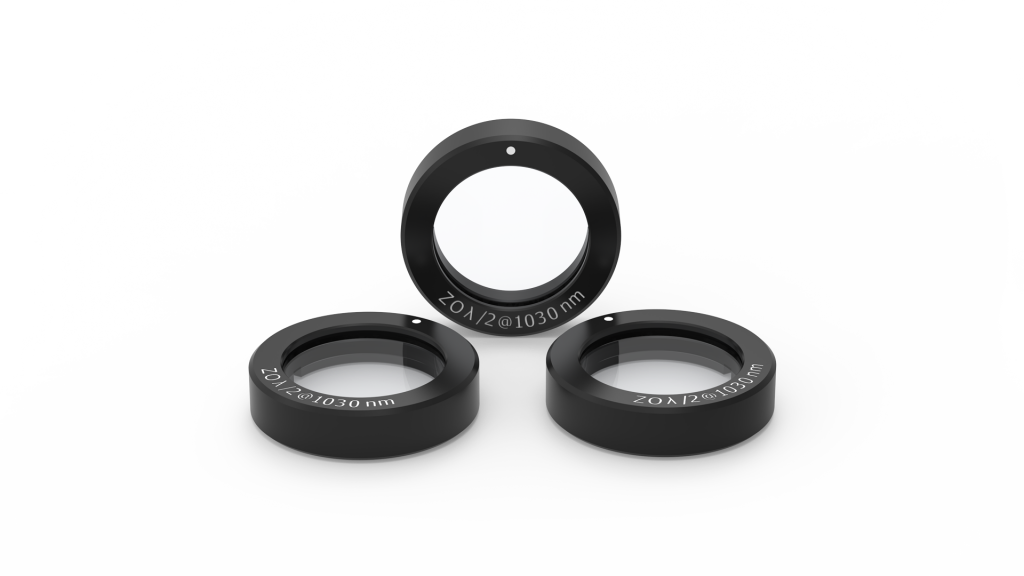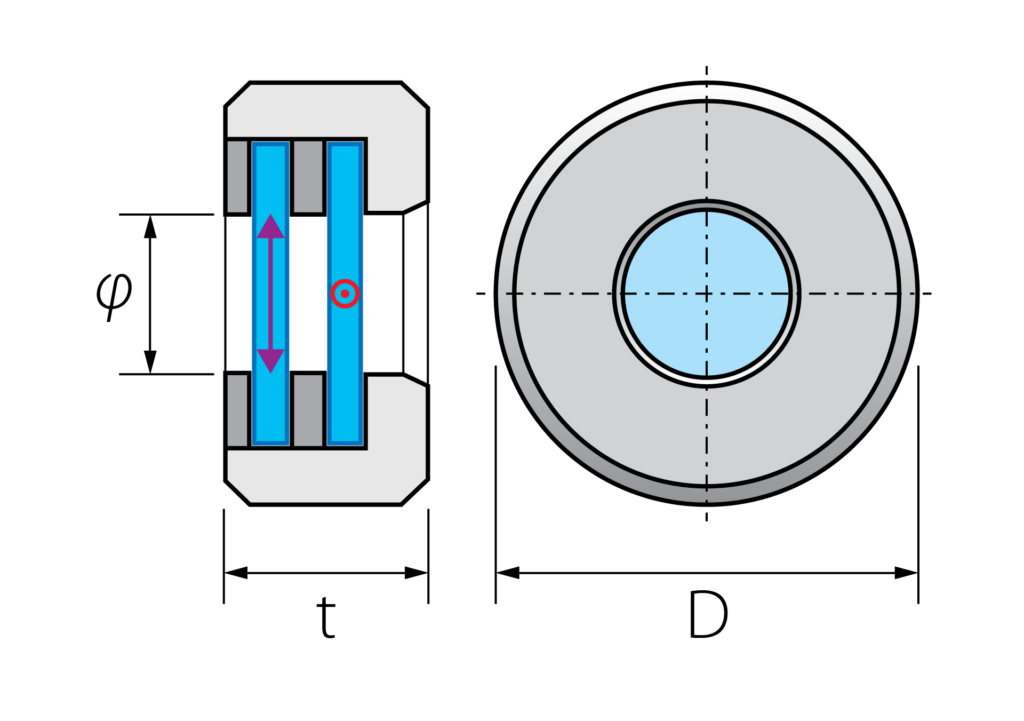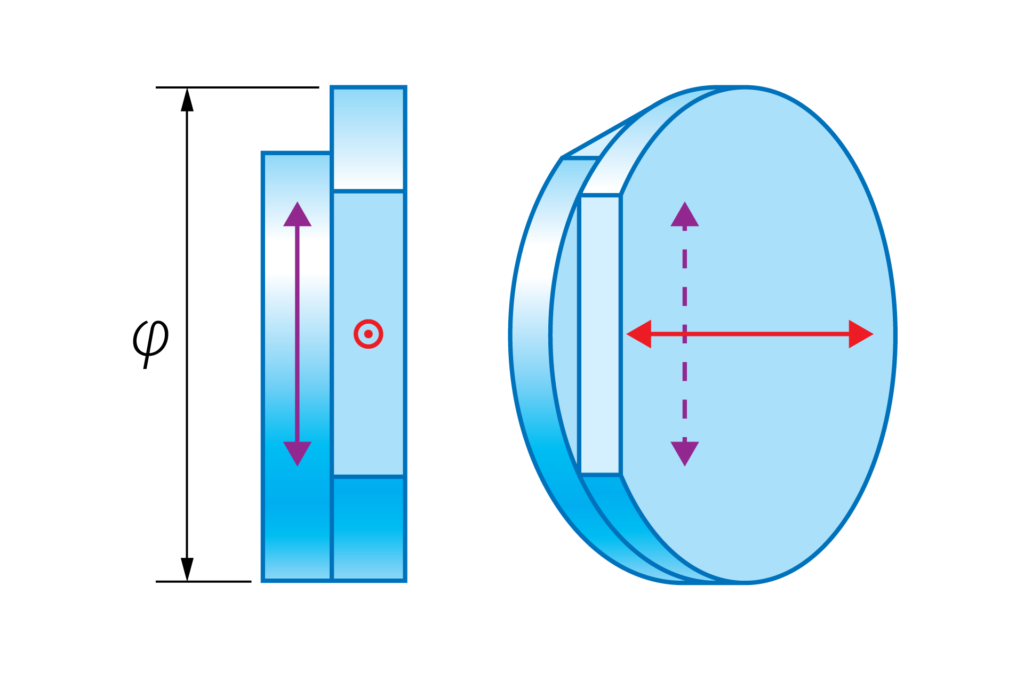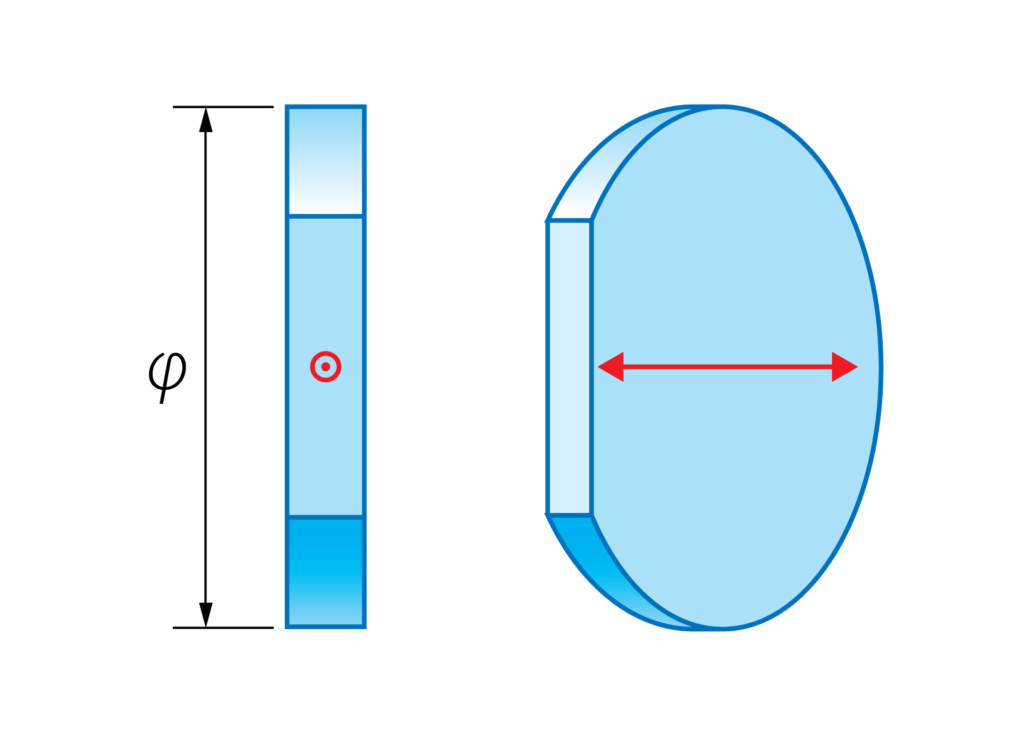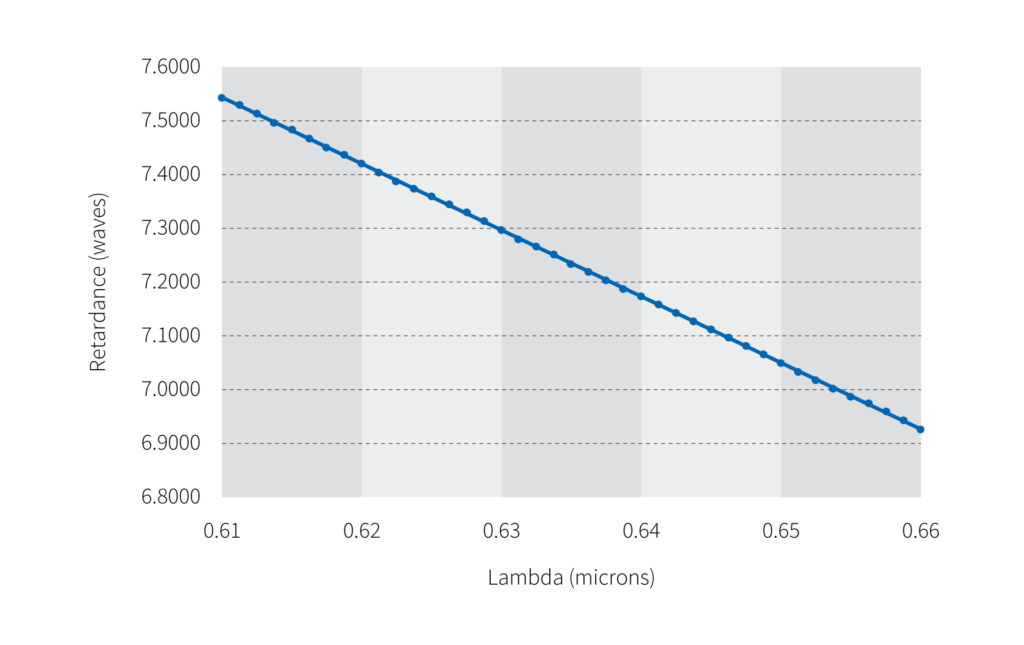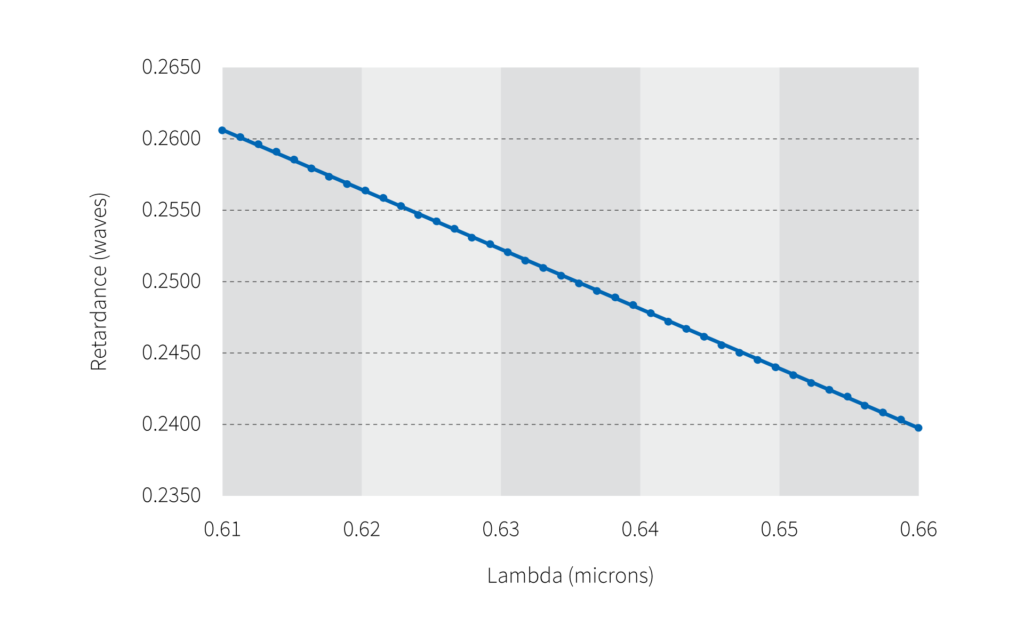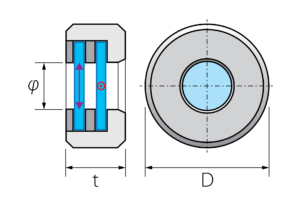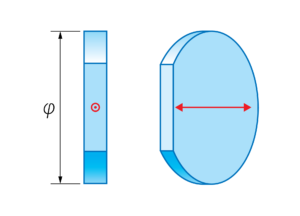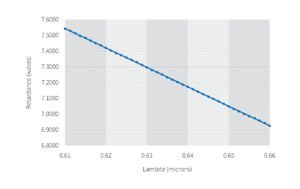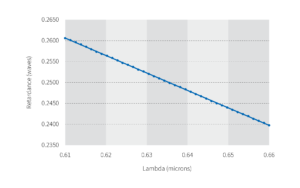Waveplates are made from materials that exhibit birefringence. The velocities of extraordinary and ordinary rays through birefringent material varies inversely with their refractive indices. This difference in velocities gives rise to a phase difference when the two beams recombine. At any specific wavelength, the phase difference is governed by the thickness of the retarder (waveplate).
Half (λ/2) waveplate. A linearly polarized beam incident on a half-wave crystal quartz waveplate emerges as a linearly polarized beam, but is rotated such that its angle to the optical axis is twice that of the incident beam. Half-waveplates can therefore be used as continuously adjustable polarization rotators. Such waveplates are used to rotate the plane of polarization, as well as for electro-optic modulation and as a variable ratio beamsplitter when used in conjunction with a polarization cube.
Quarter (λ/4) waveplate – a thin-film compensator. If the angle between the electric field vector of the linearly polarized incident beam and the retarder principal plane of the quarter-waveplate is 45°, the emergent beam is circularly polarized. When a quarter-waveplate is double-passed, such as by mirror reflection, it acts as a half-waveplate and rotates the plane of polarization to a certain angle. Quarter-waveplates are used to create circular from linear polarization or vice versa, as well as for ellipsometry, optical pumping, suppressing unwanted reflection and optical isolation.
Zero-order waveplates are generally preferred because they are least sensitive to variations in wavelength, angle of incidence and temperature.
Standard waveplates are based on air-spaced construction that allows their use for high-power applications. The damage threshold is more than 20 J/cm² for 10 ns pulses @ 1064 nm.
Our waveplates are made from excellent-quality laser-grade crystalline quartz material.
